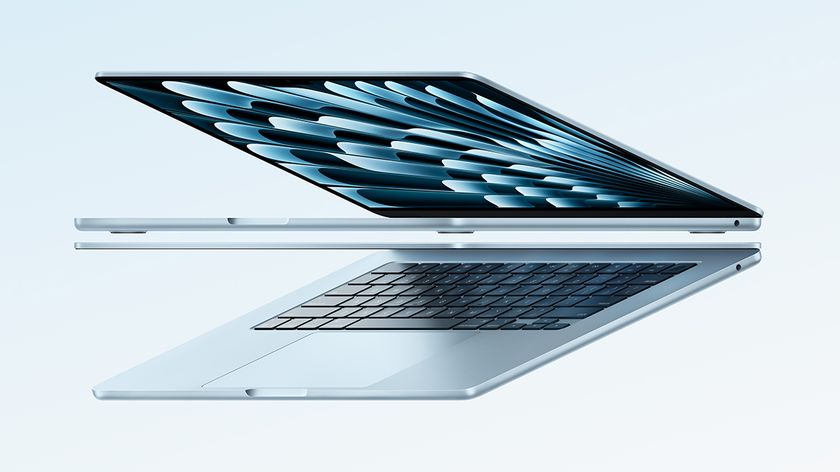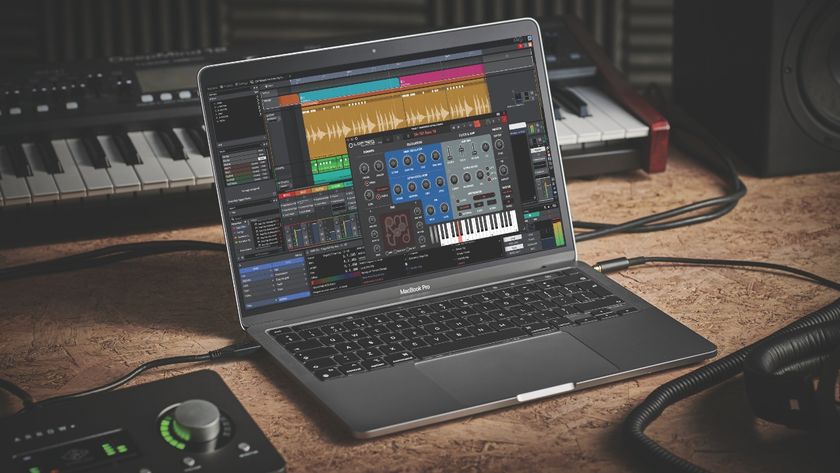Is the MacBook Pro's new Touch Bar the feature you want but don't actually need?
Apple unveils its new flagship laptop
Apple has unveiled the long-awaited new MacBook Pro, which arrives with the usual claim that it's the thinnest, lightest and most powerful version yet.
Inevitably, though, the feature that most attention will be focused on is the new Touch Bar - essentially a thin multitouch display that replaces the row of function key at the top of the keyboard.
This offers different controls depending on the software you're currently running. In GarageBand, for example, you can use it to tweak the Smart Controls on the selected track, or make volume adjustments.
There's Touch Bar support in quite a few of Apple's apps already - including Final Cut Pro X - but, strangely, Logic Pro X is still to be updated. We're guessing that it will be made Touch Bar-friendly at some point, but it remains to be seen how many third-party developers choose to get onboard.
In fact, the usefulness of the Touch Bar itself is also open to debate. It looks nice, and has that 'next-gen' vibe that's been the hallmark of many Apple innovations down the years, but it might just be a solution to a non-existent problem. In an era when touch technology typically means getting your hands on the screen, giving you a direct connection to the thing you're controlling (as on Apple's iOS devices) there will be come who consider the Touch Bar to be a backward and unnecessary step, especially when you consider what's going on in the rest of the computer hardware industry.
A Thunderbolt (not) from the blue
This being an Apple launch, there's also some port-related controversy to cover: depending on the MacBook Pro you buy, you'll now get either two or four Thunderbolt 3 (USB-C) ports. And that's it.
These are designed to cover everything, including charging, but it's highly likely that you're going to have to factor in the cost of some adapters to make your current peripherals (standard USB ones, for example) compatible.
Get the MusicRadar Newsletter
Want all the hottest music and gear news, reviews, deals, features and more, direct to your inbox? Sign up here.
Ironically, considering what Apple did with the iPhone 7, you do also get a 3.5-mm headphones socket.
These ports are housed in a new all-metal chassis that's undeniably thin and light. The 13-inch model is 14.9mm thin and weighs 1.37kg, while the 15-inch model is 15.5mm thin and weighs 1.83kg.
Other new features include Touch ID, a brighter Retina display and, of course, more power. Your processor choice is between sixth-generation dual-core Core i5 with eDRAM, dual-core Core i7 with eDRAM, and quad-core Core i7, all from Intel.
The new MacBook Pros also benefit from larger Force Touch trackpads, Apple's second-generation 'butterfly' keyboard and improved built-in speakers.
Prices and availability
The standard 13-inch MacBook Pro starts at £1,449. It features a 2.0 GHz dual-core Intel Core i5 processor with Turbo Boost speeds up to 3.1GHz, 8GB of memory and 256GB of flash storage. You can buy it right now.
The 13-inch MacBook Pro with the Touch Bar and Touch ID starts at £1,749, and features a 2.9 GHz dual-core Intel Core i5 processor with Turbo Boost speeds up to 3.3GHz, 8GB of memory and 256GB of flash storage. It'll be available in two to three weeks.
The 15-inch MacBook Pro starts at £2,349. This comes with the Touch Bar and Touch ID, a 2.6GHz quad-core Intel Core i7 processor with Turbo Boost speeds up to 3.5 GHz,16GB of memory and 256GB of flash storage. It'll be available in two to three weeks.
Find out more on the Apple website.

I’m the Deputy Editor of MusicRadar, having worked on the site since its launch in 2007. I previously spent eight years working on our sister magazine, Computer Music. I’ve been playing the piano, gigging in bands and failing to finish tracks at home for more than 30 years, 24 of which I’ve also spent writing about music and the ever-changing technology used to make it.











